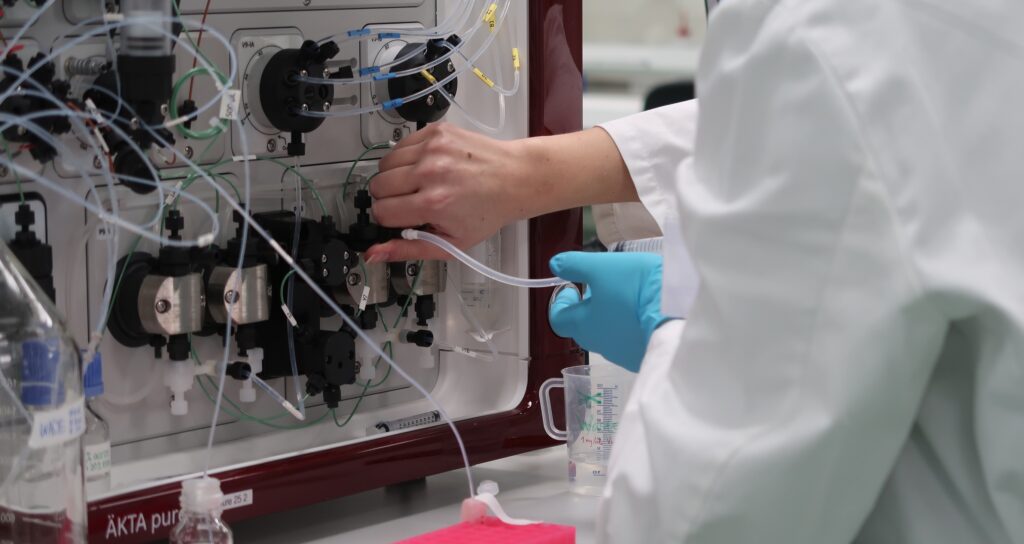During December 2020, final-year students from Uppsala university learned all about bioprocess optimization for cell growth and purification, and what life is like when you are employed at a bioprocess company.
All the students were from Uppsala University’s Master’s program in Molecular Biotechnology Engineering. This project is the main topic for their last course of the program named “Molecular Biotechnology for Production”. The students were asked by an industrial customer to carry out process development in order to deliver optimized processes for cell culturing of protein in E. coli. and purification using chromatography.
Working independently, the students enjoyed the opportunity and learned what it means to work many long hours with full responsibility for their own lab, processes and results. Karin Stensjö (Senior lecturer and associate professor at the Department of Chemistry in Ångström Laboratory at Uppsala University) who supervised the students was delighted that they were all fully engaged and eager to learn.
Testa Center made a series of interviews, which are summarized here.
Who was involved in the project?
The Downstream Team comprised Therese Koivula, Gustav Johnson and Louise Fitkin.
The Upstream Team comprised Jenny Hännestrand, Gabriel Chumpitaz Chavez, Anisha Khan and Hedvig Kindmark.
The course is ten weeks long and gives the student 15 hp (Swedish university credits) when completed. It is in addition to the Master’s Thesis to complete the five-year program.

What is your project assignment?
“We received an assignment to optimize a process protocol. It’s a “wing-to-wing” assignment and a “Do-It-Yourself” project where we own all the work – from learning how to carry out the process and the experimentation to presenting the results to the customer.”
What are you up to right now?
The Upstream Team is optimizing protein expression in E. coli using industrial bio reactors (Applikon ez2-controller parallel reactors).
Meanwhile, the Downstream Team first optimized the use of different salt fractions and will then start refining the process using different pH-concentrations on an ÄKTA pure 25 system from Cytiva.
When asked where most time was being spent, both groups spontaneously answered the same thing – “Learning!” They went on to explain, “Full ownership of the task at hand, the equipment, and experimenting without guidance makes us revisit many things we have learned in earlier courses. Not only that, but we also need to learn how to use and interpret instruments and results we’ve never seen before.”
Is this different from what you do in University?
“University lab exercises come with paper instructions and the result is often known. This project is open-ended in the sense that our results will be reviewed by a real industrial customer…” ”… Another thing is the scale of the equipment in Testa Center. It is very rewarding when you get large-scale equipment working using method programming.”
“Usually, we share the university labs with others. Sharing means you have limited time and equipment to do your experiments. We were lucky to be able to run our project in Testa Center where we had both the time and resources to try things over until we got them right.”

How does this affect you when looking for a job?
“I think this project was a great experience. It has been very inspiring for my future career,” Jenny said.
“We have had a lot of fun in the Testa Center…” and ” …It has opened my eyes to the great fun of practical work in the lab,” Therese added.
What was the best part of being in Testa Center?
“Best was being able to do everything yourself, from preparing buffers to presenting the results. Another thing is that you get hands-on experience with modern equipment actually being used in industry – that’s super valuable!”

